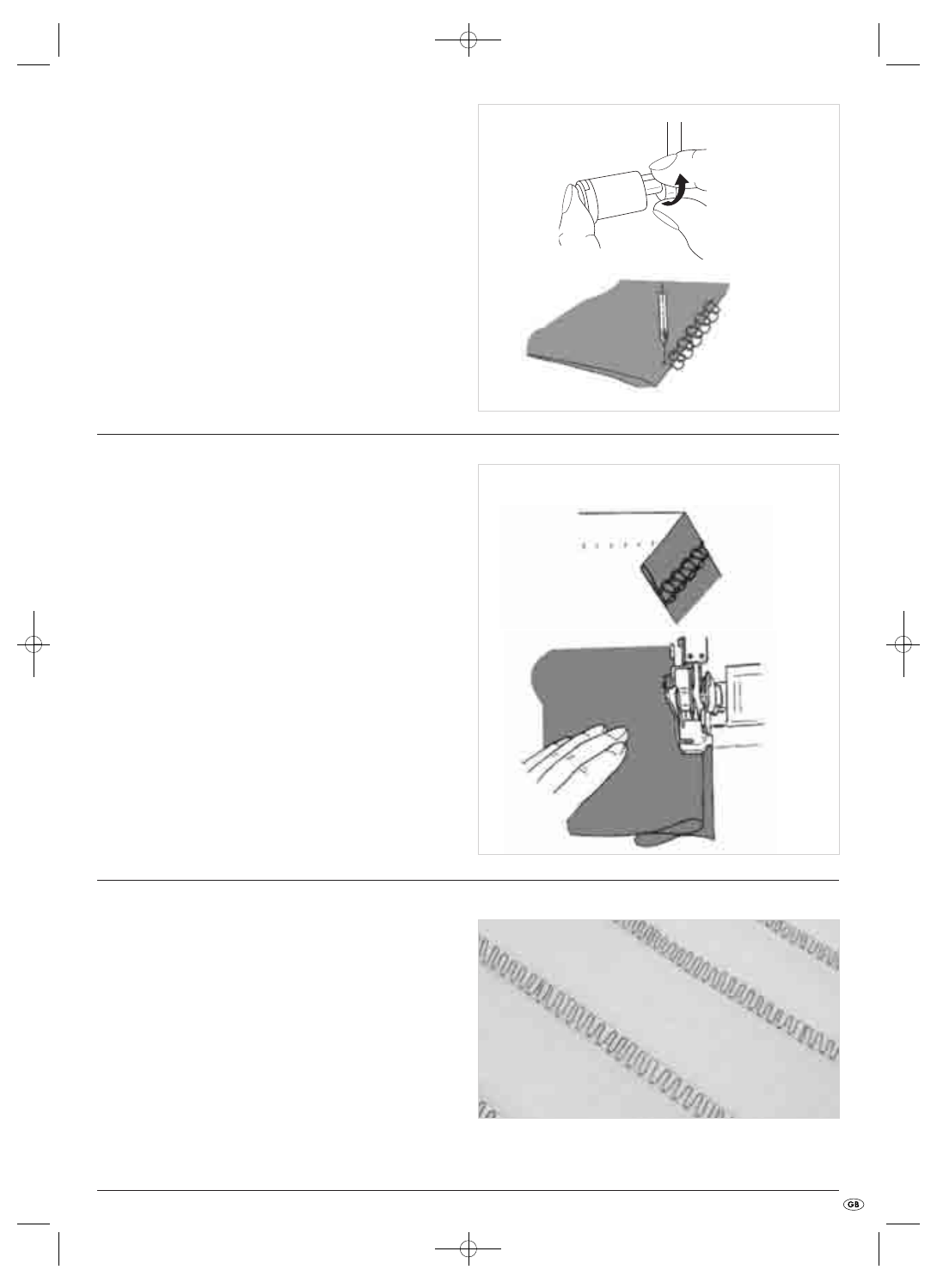Overlock blind hems, Pin tucks – Silvercrest SON 90 A1 User Manual
Page 141

- 139 -
Flatlock seam as decorative seam
• Adjust the movable upper blade i into a rest position (Fig. 92).
The textile is not trimmed in this type of seam.
• Fold the textile so that the two inside sides lie on each other.
• Place the textile so that a portion of the stitch is sewn outside of the
textile (Fig. 93).
• Sew the seam.
• Then fold the textiles apart. The stitches will then lie flat.
Overlock blind hems
The overlock blind hem is best suited for knitwear. It creates a durable
edgetidying and is hardly noticeable (Fig. 94).
In one operation the protruding material is cut away, the hem is sewn and
the edges are provided with an overlock seam.
1. Remove the left needle and set the machine up for a narrow 3-thread
overlock seam.
2. Set the stitch length to 4 mm.
3. Fold the hem, first to the inside and then to the outside of the fabric, so
that the fabric edge stands 6 mm above the first fold (Fig. 95).
4. Sew carefully on the fold. Thereby, the needle must pierce straight into
the edge of the fold.
Pin tucks
To render your decorative garment as more creative, it can be provided
with pin tucks before trimming (Fig. 96). Pin tucks are ornamental seams, as
shown in the figure 96.
1. Remove the left needle and set the machine up for a narrow 3-thread over-
lock seam.
2. Adjust the upper blade i into the rest position.
3. To achieve a uniform result, mark the desired number of pin-tucks on the
fabric with water-soluble fabric pen or fabric chalk.
4. Fold the fabric inside out and sew it.
5. When all of the tucks are sewn, iron them all in one direction so that
they lie evenly flat.
Fig. 92
Fig. 93
Fig. 94
Fig. 95
Fig. 96
IB_64780_SON 90 A1_LB5 09.03.2011 16:22 Uhr Seite 139